How dedicated horticulturists rescued the plantings of a legendary landscape to create two public gardens
There are landscape historians who will never get over how Beatrix Farrand dismantled her gardens at Reef Point.
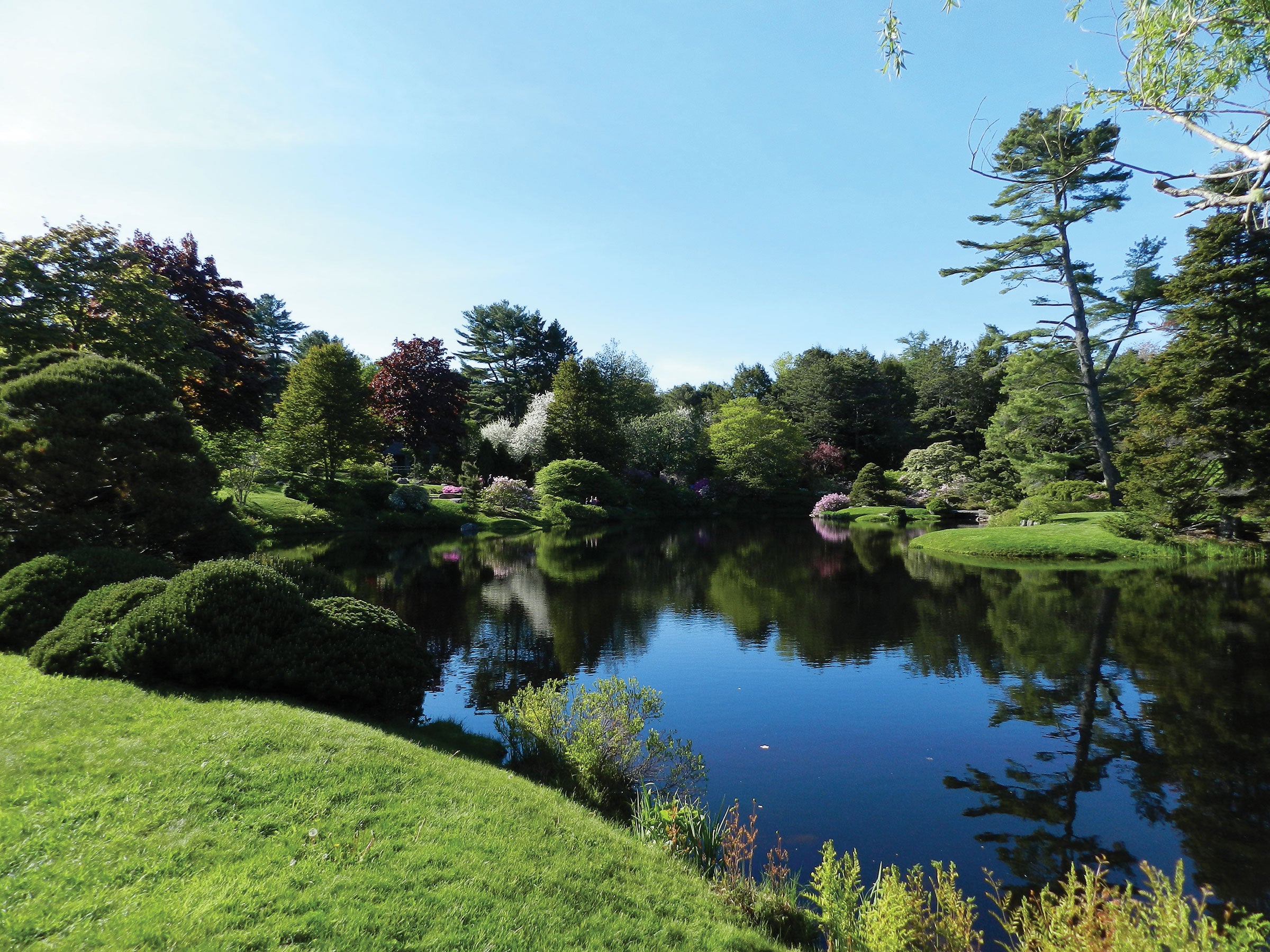
There are landscape historians who will never get over how Beatrix Farrand dismantled her gardens at Reef Point. The doyenne of American landscape architecture — and the only woman among the 11 founding members of the American Society of Landscape Architects in 1899 — worked to develop a school of horticulture and landscape design at her home in Bar Harbor, Maine. After her husband died and the great Bar Harbor fire of 1947 destroyed much of the local economy, she could no longer afford to maintain the property. In 1955, at age 82, Farrand decided to bulldoze the house and rip out the gardens.
Reef Point, and the vision it represented, is long gone, but its plants live on. Charles Savage, a local businessman and amateur landscape designer, bought the plant collection from Farrand for $5,000 with help from his friend and seasonal neighbor John D. Rockefeller Jr. Over the course of the following year, Savage moved yews, cedars, spruce, hemlock, hundreds of flowering and native Maine shrubs (including more than 250 azaleas and 175 rhododendrons), perennials, ground covers, rare willows, and endless other plant material. With them, he created two gardens in nearby Northeast Harbor.
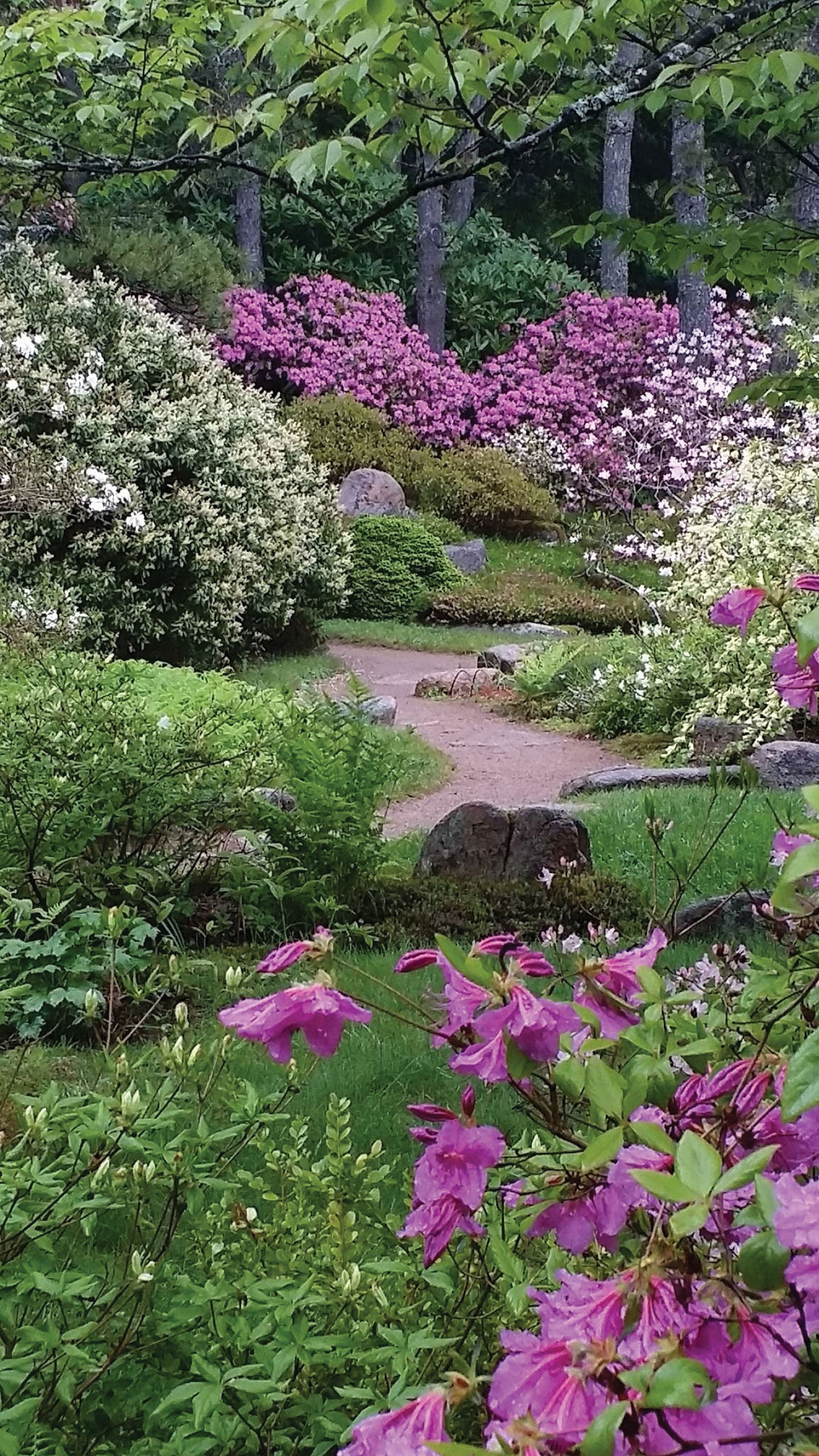
Today, Thuya and the Asticou Azalea gardens showcase not only Farrand’s plant collection, but also the vision of Savage and his predecessor, Joseph Curtis.
Curtis had been among a distinguished contingent of early “rusticators,” helping turn Mount Desert Island into an upper-class tourist destination.
A Boston landscape architect who worked with Frederick Law Olmsted, Curtis had bought 20 acres of steep Northeast Harbor hillside from Savage’s father in 1880. He carved a path up the wooded slope and built a rustic lodge. Upon his death in 1928, Curtis left the property to the town of Northeast Harbor and made Savage the sole trustee.

Savage executed Curtis’s plan for a dock connecting the harbor to the path and the lodge. He built several overlooks at switchbacks along the way, as well as a memorial to Curtis. But it was Farrand’s shocking decision to destroy her work that prompted the creation of the two gardens, one adjoining Curtis’s Thuya Lodge, the other in a former swamp. Each provides delight and surprise, and each is hidden in plain view. Privately owned and maintained, today the gardens are open to the public.
The path Joseph Curtis created ascends Asticou Hill at the base of Eliot Mountain. Stone steps climb through mossy forest, with Savage’s tile-roofed shelters providing convenient rest and views of Northeast Harbor, the Western Way, and the Cranberry Isles beyond. Hikers finally emerge at Thuya Lodge and a pair of impressive carved cedar gates. These lead into an English-style perennial garden that glows with color and blooms against the backdrop of an evergreen forest.
At the heart of Savage’s design is a long north-south axis, intersected by a shorter east-west axis. The former is terraced and has several pavilions, furnished with wooden benches and wicker chairs, dotting the way. Besides Farrand’s perennials, the garden has an apple tree planted by Curtis and a dawn redwood planted by Savage. In addition, there is a lead cistern from Reef Point and a number of Soderholtz pots: hand-turned concrete vessels created by Maine craftsman Eric Soderholtz in the early 20th century.
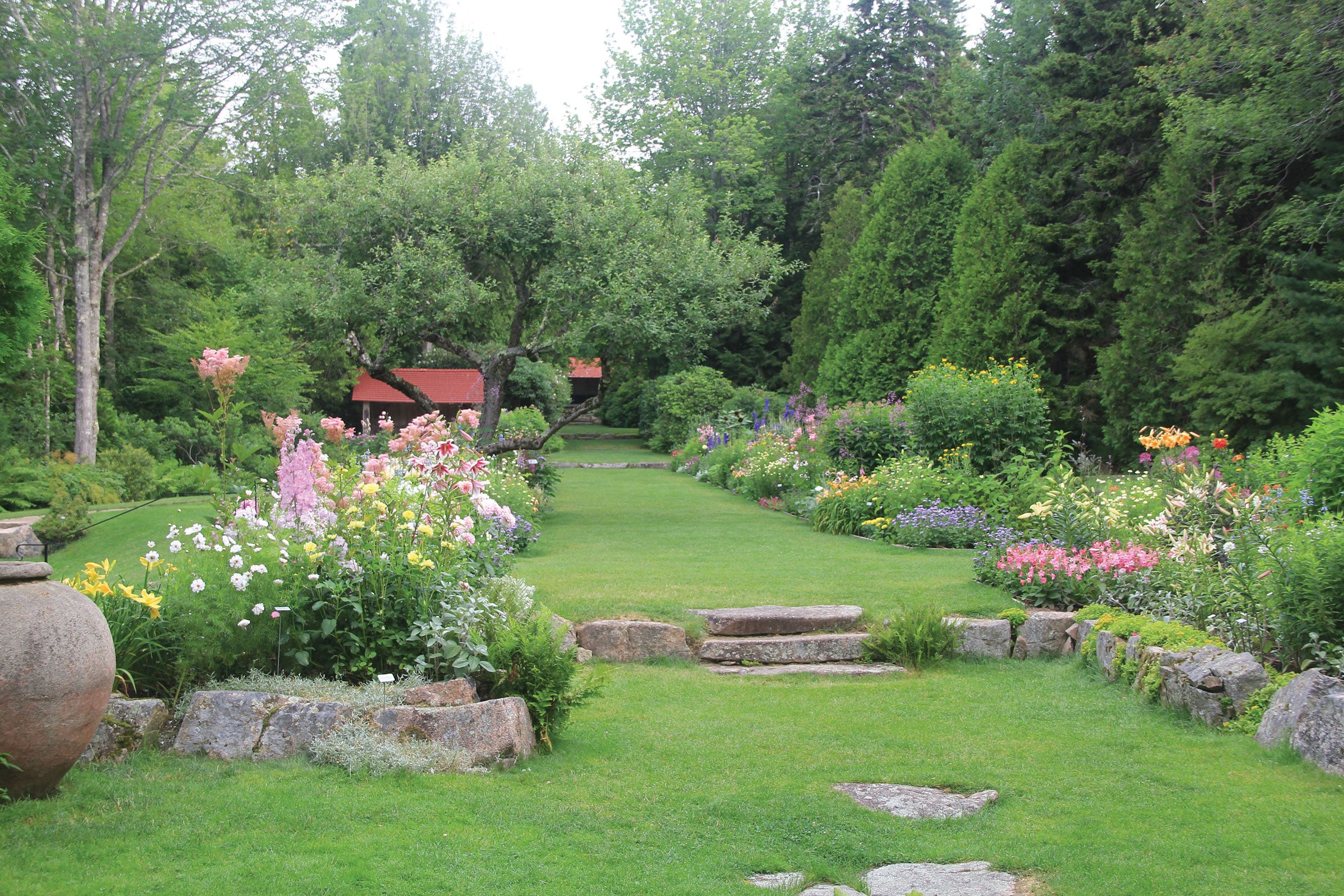
Thuya Lodge, also open to visitors, looks much as it did in Curtis’s day. The upstairs houses a horticultural library. At the garden’s far end, a gate leads to many miles of hiking trails. While the garden itself measures about 2 acres, the entire property, now owned and administered by the Mount Desert Land & Garden Preserve, encompasses 240 acres. From late July to September, the perennial beds are at their peak and attract some 10,000 visitors each year.
Back down the hillside and a quarter-mile along Peabody Drive is the Asticou Azalea Garden. The Eastern yin to the English yang of Thuya, it is the Japanese garden Savage created with Beatrix Farrand’s crabapple and evergreen trees along with her rhododendrons, azaleas, and mosses.
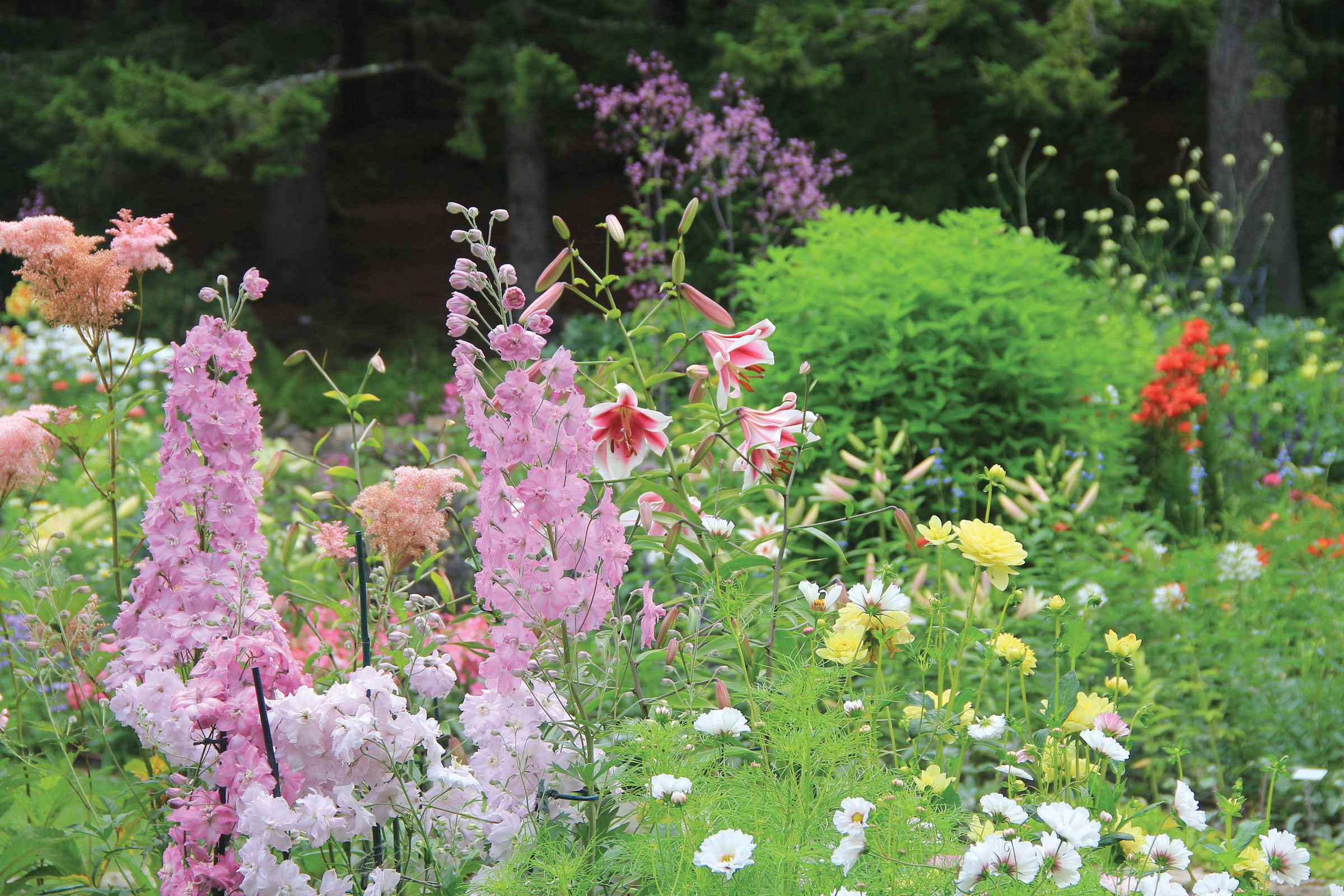
Savage never traveled to Japan, but pictures of temple gardens there reminded him of the way pitch pines grow over granite outcroppings atop the mountains of Mount Desert Island. From former marshland, he created a large pond and small reflecting pool. He installed upright stones and a granite-slab bridge and designed a circular path through a series of verdant spaces. In a prominent central area, he planted a massive Sargent’s weeping hemlock, one of Farrand’s prize specimens.
In a haven full of gorgeous vistas, one of the most stunning is a space modeled after the Zen rock garden at Kyoto’s Ryoanji temple. This gem is fashioned from white sand, a low wall made of flat, black stone slabs, accents of red roof tiles, and lichen-flecked boulders. It is hidden from view, even when walking the garden paths. Once found, however, it offers a bench from which visitors can contemplate the elements of design, the nature of beauty, and the everlasting and ever-changing qualities of gardens.
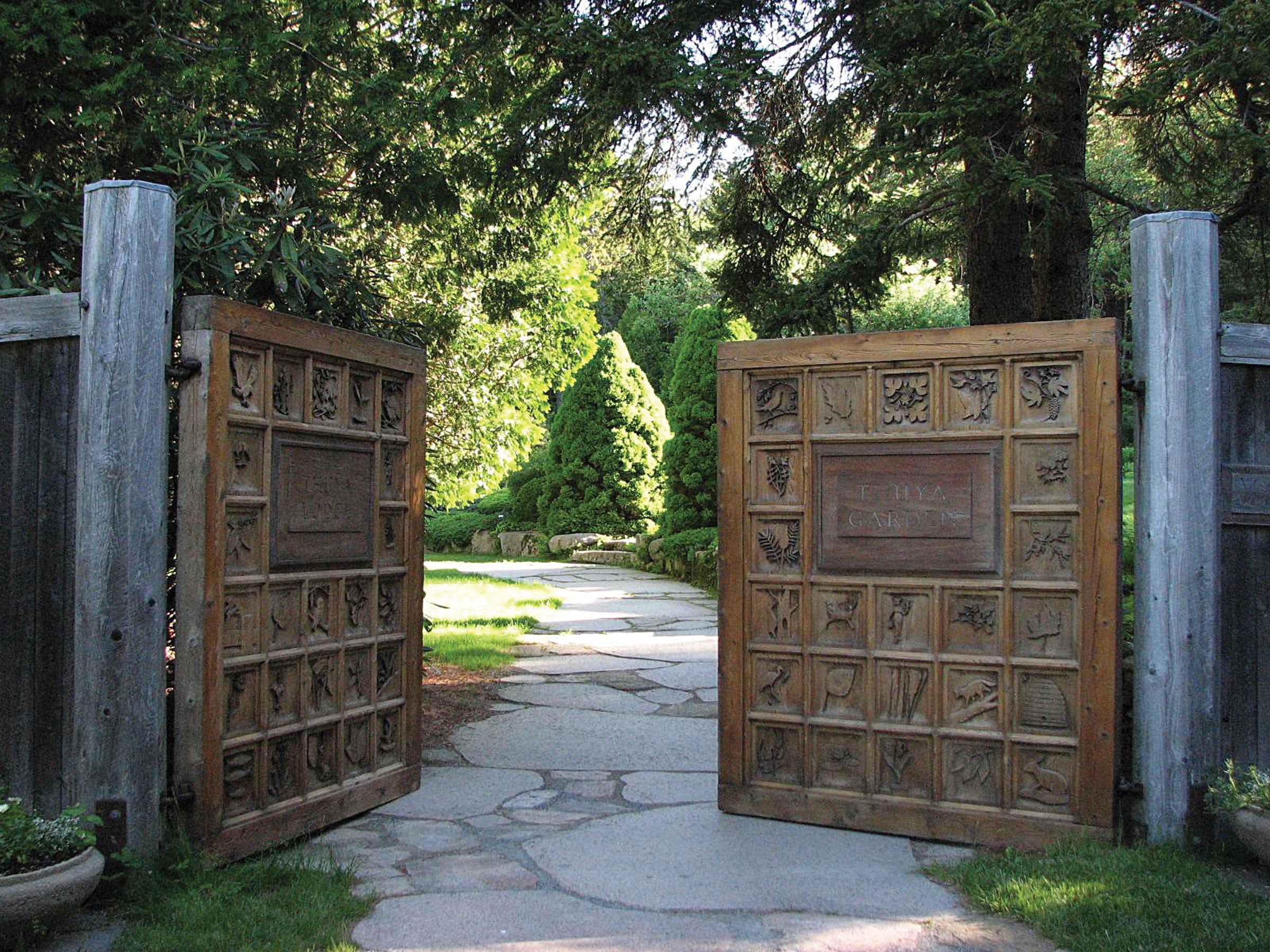







Conversation
This discussion has ended. Please join elsewhere on Boston.com